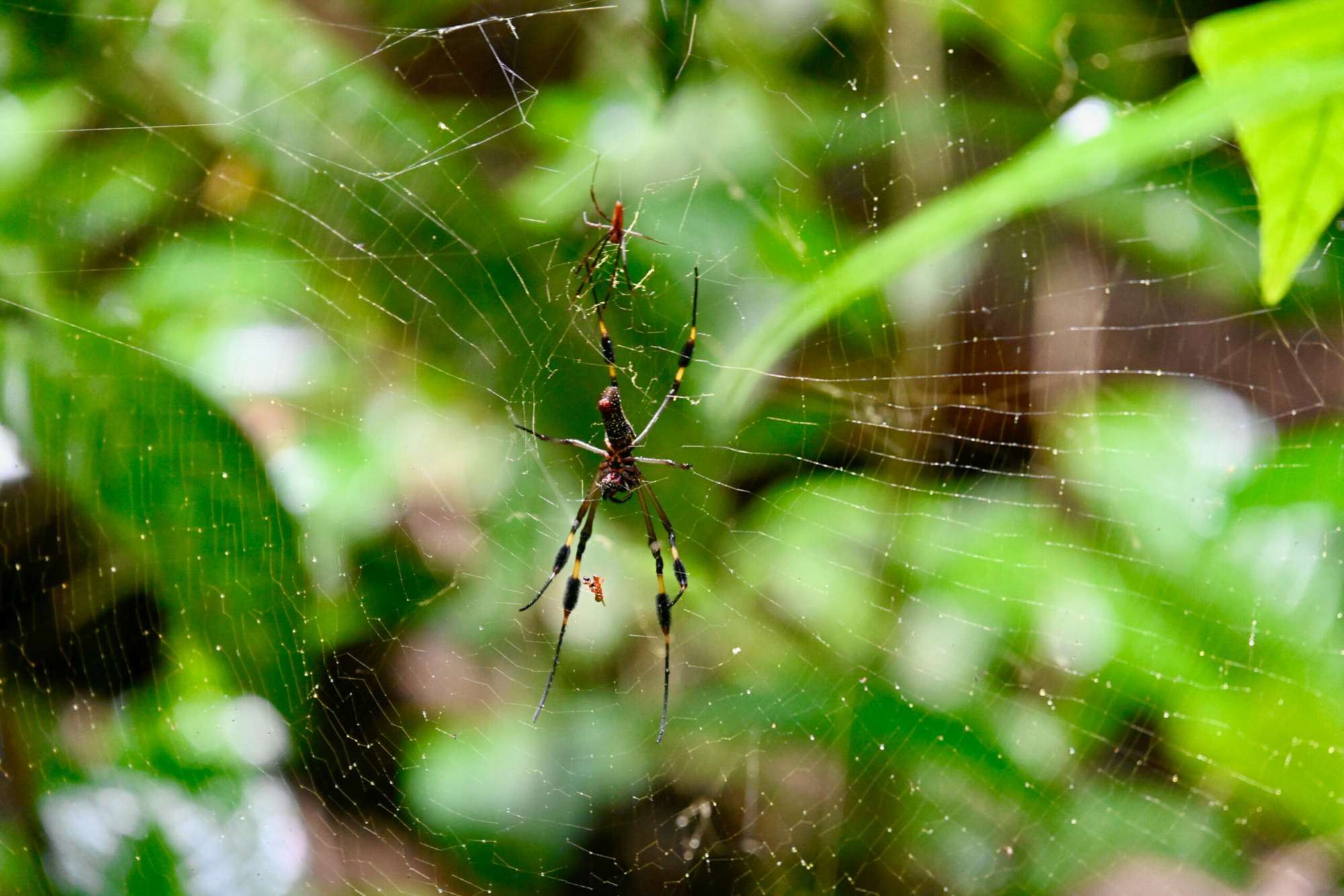Nature's Master Weaver: Unveiling the Ecological Tapestry of the Golden Silk Orb-Weaver

The Captivating Spider of Carara National Park
The Golden Silk Orb-Weaver, scientifically known as Trichonephila clavipes and colloquially referred to as the Banana Spider, stands out as one of nature's most fascinating arachnids. Renowned for its intricate webs and the golden sheen of its silk, this spider weaves not just physical structures but also an intricate part of the ecosystem's fabric. This article delves deep into the life, habitat, and ecological role of the Golden Silk Orb-Weaver, shedding light on its significance both in the wild and in potential scientific applications.
Thriving in the Diverse Landscapes of Costa Rica
The Golden Silk Orb-Weaver thrives in a wide range of habitats, from the lush forests of the southern United States down to the diverse landscapes of Argentina. In Costa Rica, particularly within the ecological haven of Carara National Park, these spiders are a common sight, embodying the rich biodiversity of the region. Adapted to both forested and coastal areas, their presence indicates healthy, undisturbed habitats.
Seasonal Variations: A Changing Canvas of Life
The visibility and web construction activities of these spiders are influenced by seasonal changes. The wet season sees their webs catching morning dew, a sight of beauty and engineering marvel, while the dry season offers clearer views of their webbing prowess.
Capturing the Essence of the Golden Silk Orb-Weaver
Insights from EXIF Data
The EXIF data reveals a shutter speed of 1/125 and a high ISO of 5600, likely due to the dim lighting under the rainforest canopy. A focal length of 200mm indicates that the photographer maintained a respectful distance, allowing for a candid shot of the spider in its natural state.
The Architectural Masterpiece: Web Construction and Silk Properties
Golden Silk Orb-Weavers are masterful architects, constructing large, asymmetrical webs that serve as efficient traps for their prey. Their silk, known for its incredible tensile strength—surpassing that of steel—has captivated scientists and engineers alike.
Silk Utilization: Biomimetic Applications and Beyond
The spider's ability to produce seven different types of silk for various purposes, from web construction to egg sac protection, underscores the potential for biomimetic applications in materials science, especially in developing strong, flexible materials for medical and technological use.
The Predatory Prowess and Ecological Role
Employing a mix of venom and strategic web placement, the Golden Silk Orb-Weaver captures a variety of prey. From insects like dragonflies to occasionally larger fare such as small birds or snakes, their diet highlights their role in natural pest control and maintaining ecological balance.
Ecological Impact: Regulating Insect Populations
By regulating insect populations, these spiders contribute significantly to the health of their ecosystems, showcasing the interconnectedness of predator-prey dynamics in nature.
Coexisting with Humans: Cultural Significance and Conservation Efforts
Despite their intimidating appearance, Golden Silk Orb-Weavers are not aggressive towards humans and pose little threat. Their venom, while effective on their prey, has low toxicity to humans, making encounters with these spiders more a subject of fascination than fear.
Cultural Representation: Symbols of Creativity and Patience
In local cultures, the spider symbolizes creativity and patience, embodying the intricate beauty and complexity of nature. Their role in folklore and as a natural muse reflects a deep-seated respect and admiration for these creatures.
Conservation and the Role of Carara National Park
The scientific community has shown a keen interest in the Golden Silk Orb-Weaver, particularly in the potential applications of its silk in biomedicine and materials engineering. Studies exploring its use in nerve regeneration and as a model for developing durable, biocompatible materials underscore the spider's contribution beyond its ecological niche.
Protecting the Tapestry of Life
Protecting habitats like Carara National Park is crucial for the preservation of the Golden Silk Orb-Weaver and the biodiversity it represents. Conservation efforts focus on mitigating threats from deforestation and climate change, ensuring these natural architects can continue to thrive.
Unraveling the Mysteries of the Golden Silk Orb-Weaver
Physical Characteristics and Behavioral Observations
Distinguished by their large size and the golden hue of their silk, female Golden Silk Orb-Weavers are particularly notable. The striking red-brown and yellow coloring of these spiders, coupled with their significant size difference from males, makes them a visually distinctive species. Observing these spiders reveals a world of intricate behaviors, from their meticulous web construction to their unique mating rituals, offering insights into the complexity of arachnid life.
Carara National Park: A Sanctuary for Nature's Weavers
Within the diverse ecosystem of Carara National Park, the Golden Silk Orb-Weaver exemplifies the intricate balance of nature. As a key predator of insects, it plays a vital role in the ecological health of the park, contributing to the control of pest populations and the maintenance of biological diversity.
Conservation and Coexistence: Preserving the Delicate Balance
Efforts to protect Carara's unique ecosystem underscore the importance of understanding and supporting the roles of its inhabitants, including the Golden Silk Orb-Weaver. Human activities within the park are managed to ensure minimal impact on this delicate balance, promoting a harmonious coexistence between humans and nature.
Conclusion: Celebrating the Wonders of the Golden Silk Orb-Weaver
The Golden Silk Orb-Weaver is more than just a spider; it is a symbol of nature's intricacy, resilience, and beauty. Its role in the ecosystem, potential for scientific research, and cultural significance make it a fascinating subject for conservationists, scientists, and nature enthusiasts alike. As we continue to explore and understand the natural world, the Golden Silk Orb-Weaver serves as a reminder of the wonders that lie in the web of life and the importance of preserving these natural treasures for future generations.
